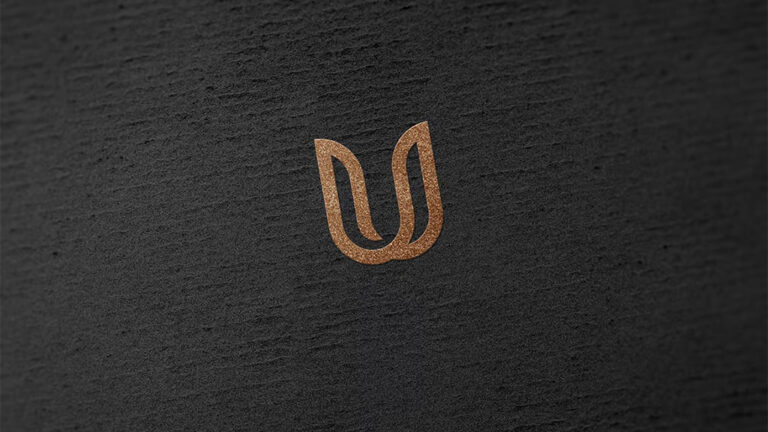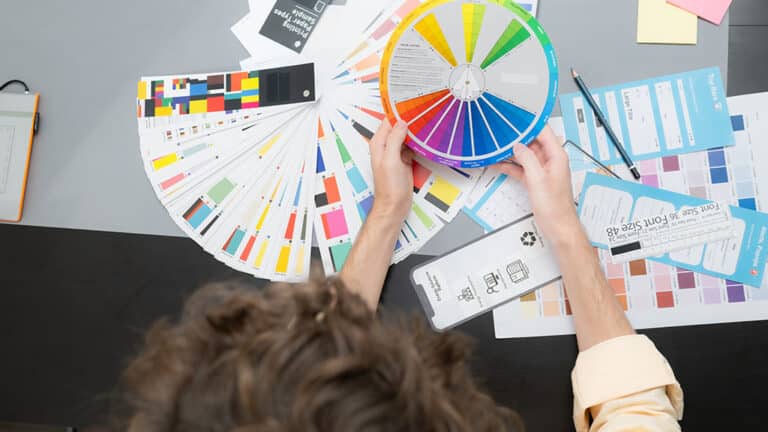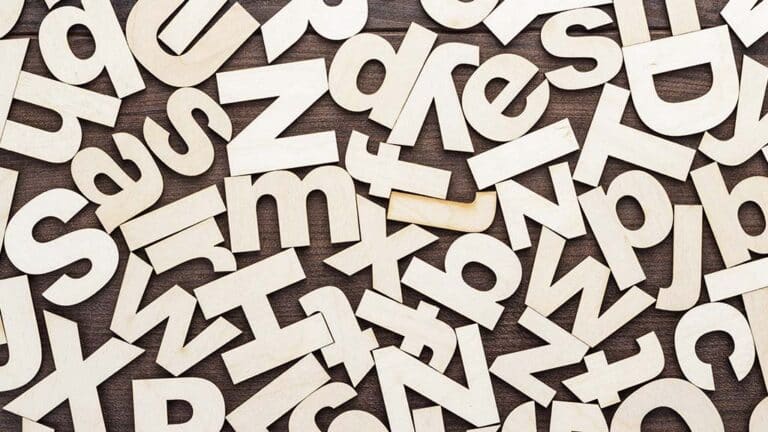The Hidden Costs of Poor Graphic Design
For many small businesses, design is often viewed as a nice-to-have rather than a core investment. It’s common to assume that as long as something is legible and somewhat appealing, it’s “good enough.” Free design tools, budget freelancers, and quick DIY fixes can seem like smart cost-saving moves—especially in the early stages of business. But what many business owners don’t realize is that poor design can silently chip away at credibility, customer trust, and revenue potential.
Bad design doesn’t just look unprofessional—it creates confusion, sends the wrong message, and impacts how customers experience your brand. Over time, the effects compound: fewer clicks, fewer conversions, less engagement, and ultimately, less growth. These aren’t just aesthetic issues; they’re business problems.
In this post, we’ll unpack the hidden costs of poor graphic design—those subtle, often overlooked ways in which weak visuals hurt your brand and bottom line. If you’re looking to build lasting customer relationships and grow your business with intention, understanding these risks is the first step toward doing design the right way.
Weak First Impressions Drive Customers Away
First impressions are made in seconds, and they’re incredibly difficult to reverse. When someone visits your website, sees a social media ad, or receives your marketing material, they immediately form an opinion about your business—before they read a single word. And much of that impression is driven by design.
Poorly designed visuals—cluttered layouts, mismatched colors, outdated fonts, or low-quality images—create doubt. They make your business seem less trustworthy, less experienced, or even less legitimate. A potential customer might assume your services aren’t high quality, even if that’s far from the truth. First impressions set the tone for the customer journey, and if your visuals fall short, it may be the last interaction that customer ever has with your brand.
Even subtle design flaws can lead to snap judgments. Off-brand color choices or awkward formatting may not scream “unprofessional,” but they create an underlying sense of unease or disinterest. That hesitation—lasting just a few seconds—can be the difference between someone clicking through or clicking away.
On the other hand, strong design establishes credibility instantly. It shows you care about the details and value the customer experience. It makes people want to stick around and learn more. Investing in quality design up front ensures that your brand starts off on the right foot with every new viewer.
Inconsistent Branding Erodes Trust
One of the biggest issues that stems from low-quality design is inconsistency. When your brand visuals don’t match across platforms—when your logo changes slightly from one post to the next, your colors shift from print to web, or your fonts vary from flyer to email—it sends mixed signals to your audience.
Consistency isn’t just about visual polish; it’s about building recognition and trust. Think about the most well-known brands in the world: their visuals are so consistent that you can recognize them instantly, even without reading the name. That level of familiarity only comes with strict adherence to a cohesive design system.
Poor design practices—especially when using DIY templates or a rotating list of freelancers—often lead to fractured branding. You may end up with a logo that doesn’t scale properly, social posts that don’t match your website, or packaging that feels disconnected from your digital presence. These visual gaps create confusion. And confusion erodes trust.
Customers want to feel confident in who they’re buying from. Inconsistent branding makes it harder for them to recognize you and feel secure in their decision to engage with your business. That’s why working with a partner who offers professional graphic design services can make all the difference—it ensures your brand is presented consistently and confidently across every touchpoint.
Low Engagement on Marketing Content
You can have the best product or most compelling message in the world, but if your marketing visuals aren’t grabbing attention, that message may never reach your audience. Poor graphic design often results in low-performing content that fails to stand out in crowded digital spaces. Whether it’s a social media post, email campaign, or paid ad, design is what determines whether someone stops scrolling—or keeps moving.
Bad design doesn’t just fail to attract—it actively repels. Overwhelming visuals, hard-to-read text, awkward spacing, and clashing colors make people tune out. Inconsistent or amateurish designs are more likely to be dismissed as spammy or unprofessional, even if the offer is valuable. And once someone has ignored your content a few times, it becomes much harder to win back their attention.
When engagement is low, metrics suffer across the board. Click-through rates drop, conversions stall, and ad spend becomes inefficient. That’s not just a creative issue—it’s a financial one. You’re paying to put content out into the world, and if that content isn’t converting, you’re essentially wasting money.
By contrast, high-quality, visually striking designs draw the eye, reinforce brand identity, and lead viewers seamlessly to the next step—whether that’s clicking a link, signing up, or making a purchase. Design is what guides the journey, and when done well, it turns attention into action.
Print and Production Mistakes Cost Time and Money
Digital design mistakes can be frustrating, but print mistakes can be downright expensive. Unlike a quick website edit or social media update, printed materials are locked in once they’re produced. If the design was poorly executed—wrong dimensions, low resolution, incorrect bleed or margin settings—it often means scrapping an entire run of business cards, brochures, packaging, or signage.
These errors are more common than you might think, especially when businesses rely on free design tools or inexperienced designers. Files may be delivered in the wrong format, color profiles may not be set up correctly for printing, or fonts may not embed properly. The result? Blurry images, off-brand colors, misaligned cuts, and materials that don’t reflect the quality of your brand.
In addition to the financial hit, there’s also the delay factor. Redesigning and reprinting can push back marketing campaigns, delay product launches, or cause you to miss important deadlines. It’s not just the cost of fixing the problem—it’s the opportunity cost of lost time and momentum.
Working with experienced designers who understand print specifications helps you avoid these costly pitfalls. They ensure that every asset is set up properly from the start, with the correct file types, dimensions, and color profiles. That level of precision not only protects your budget—it protects your reputation.
Poor UX Design Leads to Lost Sales
User experience (UX) design is one of the most overlooked areas where bad graphic design can have a serious impact. If your website, app, or digital interface is hard to navigate, visually confusing, or slow to load because of bloated visuals, users will leave—often without ever giving your business a chance.
Poor layout, unreadable text, inconsistent button styles, and lack of visual hierarchy all contribute to a frustrating user experience. People shouldn’t have to work to understand your site or find what they’re looking for. If they can’t figure it out within a few seconds, they’re likely to click away and find a competitor who makes things easier.
Even worse, bad design can create friction at the most critical stages—like checkout pages, contact forms, or product pages. If a form is hard to fill out or a button doesn’t look clickable, users may abandon their purchase or never convert. That’s revenue lost not because your offering wasn’t good enough, but because the design didn’t support the journey.
Investing in thoughtful UX design ensures your site is not only visually appealing but intuitive and conversion-focused. It removes obstacles, guides behavior, and creates a smooth experience that turns visitors into loyal customers. Design isn’t just about aesthetics—it’s about functionality. And when that functionality breaks down, so does your ability to close the sale.
Missed Opportunities for Differentiation
In competitive markets, standing out is everything. Your visual identity is often the first and most lasting impression your audience gets, and poor graphic design makes it much harder to rise above the noise. When your visuals are uninspired, generic, or inconsistent, your brand blends into the background instead of carving out a distinct space in the minds of potential customers.
Design is a key tool in storytelling. It communicates your brand’s personality, values, and point of view—often before a single word is read. When executed well, it helps customers immediately understand who you are, what you stand for, and why they should care. But when design is weak or disconnected from your brand narrative, those messages get lost.
Many businesses miss out on opportunities simply because their branding doesn’t make an impact. A forgettable logo, poorly designed product packaging, or a dated website design can lead customers to choose a competitor whose visuals feel more modern, polished, and trustworthy—even if the product or service quality is the same.
Strong design helps you differentiate by making your brand memorable. It allows you to position yourself creatively and emotionally in a way that resonates with your ideal audience. Without it, you’re left relying solely on messaging or pricing—both of which are harder to communicate without compelling visuals to support them.
Wasted Time on Constant Redesigns
One of the most underestimated costs of poor design is the need for constant revisions and rework. When you start with subpar design—whether from an inexperienced freelancer, a DIY template, or rushed internal work—you often find yourself stuck in a cycle of “fixing” rather than progressing.
This might look like updating your logo every year because it never quite feels right, reformatting social media templates every few months to chase trends, or redesigning your website after realizing it doesn’t align with your brand anymore. Each of these efforts takes time and energy away from more strategic tasks—and that time adds up fast.
Beyond the direct labor hours, repeated redesigns can also confuse your audience. Constant visual changes prevent your brand from developing a recognizable identity. Customers may struggle to remember who you are, especially if your look and feel is constantly evolving or lacks cohesion across platforms.
Starting with strong design grounded in strategy ensures that your assets last longer, evolve more naturally, and scale with your brand. It means fewer revisions, smoother updates, and a more consistent presence that earns trust over time. Investing in good design up front isn’t just about saving money—it’s about saving your team’s time and protecting your brand from confusion and fatigue.
Damage to Long-Term Brand Perception
Brand perception isn’t built in a single moment—it’s built over time, through every interaction someone has with your business. Poor graphic design may not always cause immediate harm, but its long-term effects can quietly erode how your business is viewed by customers, partners, and even your own team.
Over time, sloppy visuals can send the message that your business doesn’t care about quality, detail, or professionalism. Whether it’s a stretched logo on a presentation, pixelated images on your website, or disjointed layouts in your email marketing, each of these visual missteps chips away at your credibility.
It also affects internal confidence. Your team is more likely to feel proud and motivated when representing a brand that looks polished and aligned. If they’re embarrassed by the way your materials look—or constantly fielding questions about unclear or unprofessional visuals—it can lead to disengagement and lost productivity.
Poor design can also hurt your chances of attracting high-quality partners, media coverage, or investors. If your branding lacks polish, others may assume your operations do too. First impressions matter not only to customers but to everyone your brand touches. And when those impressions are consistently underwhelming, the damage can quietly compound.
Conclusion: Invest Once, Save (and Earn) More in the Long Run
The true cost of poor graphic design isn’t always immediate. It shows up in missed sales, confused customers, wasted hours, and a brand that struggles to gain traction in a competitive world. These costs are often hidden—spread out across different departments and touchpoints—but they are real and measurable.
Great design, by contrast, is a long-term asset. It’s the foundation for brand recognition, customer trust, and growth. It helps your business look the part, communicate clearly, and perform confidently across every platform. It tells your story with intention and makes a lasting impression.
While investing in professional design may seem like a significant upfront expense, it’s one of the smartest financial decisions you can make for your business. It minimizes costly mistakes, reduces the need for constant rework, and supports stronger, more consistent marketing results over time.Ultimately, design isn’t just how your brand looks—it’s how your brand works. And when it works well, everything else becomes easier. So instead of asking what professional design costs, the better question is: what is poor design already costing you?

















